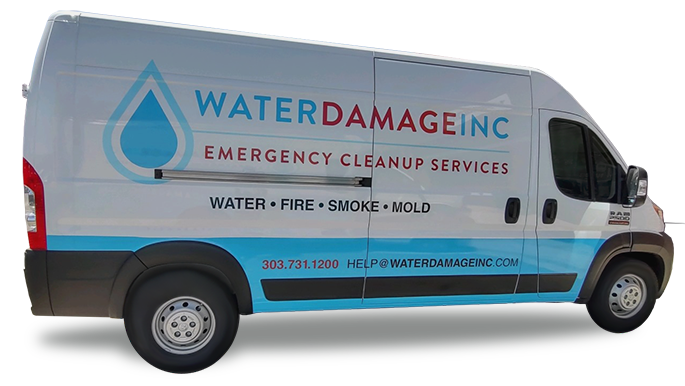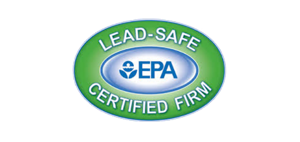Ever wondered about a silent threat hiding behind your walls? It’s water seepage, a common problem for homeowners. It shows up as damp walls, peeling paint, mold, and water stains. If ignored, it can cause serious damage, risking your home’s safety and value.
It’s vital to tackle water seepage quickly. Spotting early signs and knowing the causes is key to fixing it. Solutions range from basement waterproofing to fixing water leaks. By acting fast, you protect your home from future damage.
Identifying the Source of Water Seepage
Finding where water is seeping into a property is key to fixing the problem. It’s important to figure out if the water is coming from inside or outside. To do this, you need to inspect carefully and use special tools to find the source.
- Plumbing Inspections: Start by checking all plumbing for leaks. Look closely at sinks, bathtubs, and water heaters. These spots are often where leaks happen.
- Roof Surveys: Next, check the roof for damage, especially after rain. Look for broken shingles, clogged gutters, and bad flashing. These can cause water to leak in.
- Foundation Checks: Then, check the foundation for cracks or weaknesses. Cracks in the foundation can let water in, especially when it rains a lot or snow melts.
- Drainage Examination: Finally, check the drainage system to make sure it’s working right. If it’s not, water can build up around the foundation and cause leaks.
Using modern tools can help find where water is coming from. Moisture meters can show how wet walls and floors are. Infrared cameras can spot temperature changes caused by moisture. Water tests can also help find leaks by simulating them.
By taking a detailed approach to finding water leaks, you can figure out where they’re coming from. This helps you fix the problem right. It also helps you tell if the leak is from rain or groundwater. With these steps, you can find and fix water leaks effectively.
Preparing for Repair
Getting ready for water damage repair is key to a smooth process. Start by cleaning the area well. Use wet vacuums or mops to remove standing water. Then, get rid of damaged stuff like wet drywall or carpets to stop more harm.
Next, dry out the area with dehumidifiers and fans. This step is crucial to stop mold and get the area ready for fixing. Make sure to let it dry fully to avoid bad repairs later.
Protecting your home and keeping it safe is also important. Move or cover up furniture, electronics, and other valuable things. Also, turn off all electrical systems near the damaged area to avoid accidents.
Wearing the right gear is vital when dealing with water damage, especially if there’s mold. Gloves, masks, and goggles help keep you safe from harmful stuff. By following these steps carefully, you can make the repair process safer and easier.
Effective Methods to Fix Water Seepage
Fixing water seepage needs a mix of inside and outside fixes. Many water seepage repair techniques target various leaks. The right plan keeps your home safe and stops damage.
- Foundation Crack Repair: Fixing foundation cracks is key. Epoxy injections seal cracks from inside, stopping water leaks. It works well for small to medium cracks.
- Interior Drainage Systems: Inside, sump pumps and weeping tiles are great. Sump pumps pull water out of basements or crawl spaces. Weeping tiles move water away from walls and into drains.
- Exterior Waterproofing Methods:
- Waterproof coatings: Add a waterproof layer to outside walls to keep moisture out.
- French drains: Trenches with gravel and pipes move water away from the foundation.
- Gutter upkeep: Clean gutters and downspouts often to keep water away from the home’s base.
Using these water seepage repair techniques and keeping up with maintenance helps a lot. Fixing both inside and outside problems protects your home from water damage.
Preventative Measures to Avoid Future Seepage
Stopping water seepage starts with taking action early and keeping up with maintenance. Keeping your home safe from water damage means using water seepage prevention and regular care. Smart landscaping also plays a big role.
Here are some key strategies for effective water seepage prevention:
- Maintaining Waterproofing: Check and fix any cracks or weak spots in your basement walls and floors. Apply a fresh coat of waterproof sealant to keep water out.
- Landscaping for Drainage: Good landscaping keeps water away from your home’s foundation. Use gravel or stones near the base and make sure the ground slopes away. This stops water from pooling around your house.
- Moisture Control Strategies: A dehumidifier in your basement or crawl space helps control humidity. Also, make sure these areas have good ventilation to prevent moisture buildup and seepage.
Regular checks and maintenance are key to stopping water seepage. Fixing small problems early and watching for potential issues can save a lot of money later.
By using these moisture control strategies and sticking to a maintenance plan, you can keep your home dry and healthy. You’ll also protect your property from future water damage.
Conclusion
Fixing water seepage is more than just quick repairs. It’s a key part of keeping your home safe and its value high. Finding where the water is coming from and getting ready for repairs is the first step. Each part of the process is important to keep your home dry and safe.
The article also talks about stopping water seepage before it starts. This is key to keeping your home’s value up and avoiding future problems. By checking for seepage often and keeping drainage systems working, you can lower the chance of damage.
Homeowners should act fast to manage water seepage. You can do this yourself or get help from professionals. Fixing these issues early can save you from bigger and more costly repairs later. Taking care of your home against water damage is an ongoing job that keeps your property valuable and lasting.






















